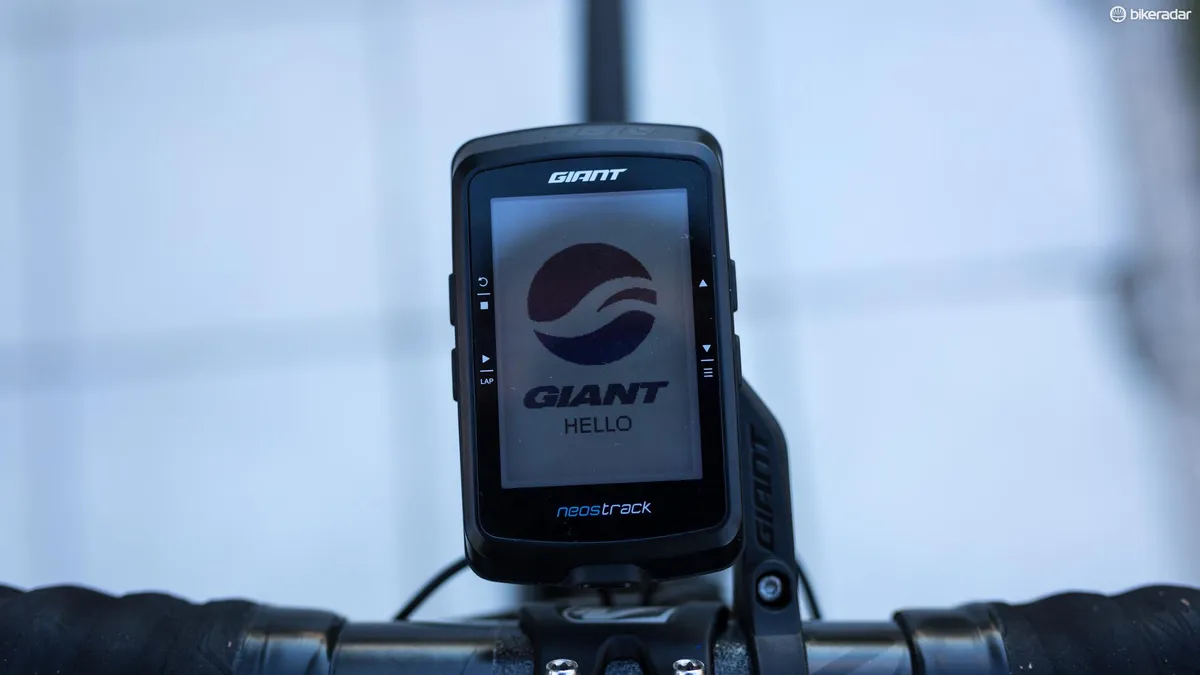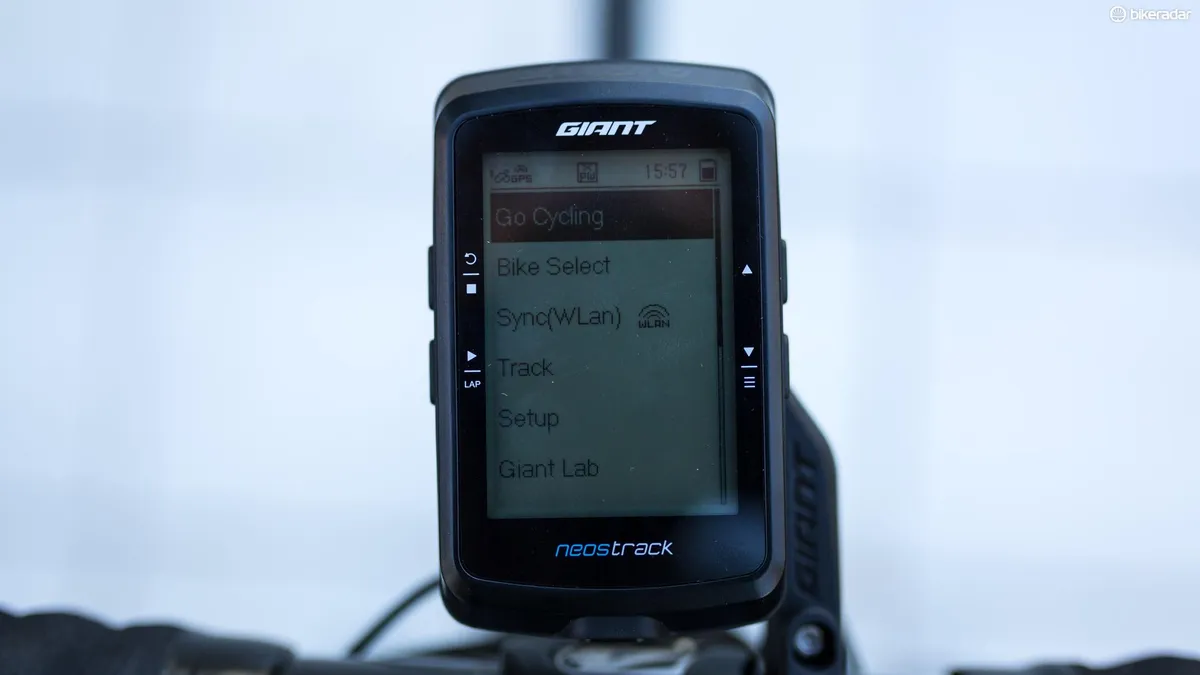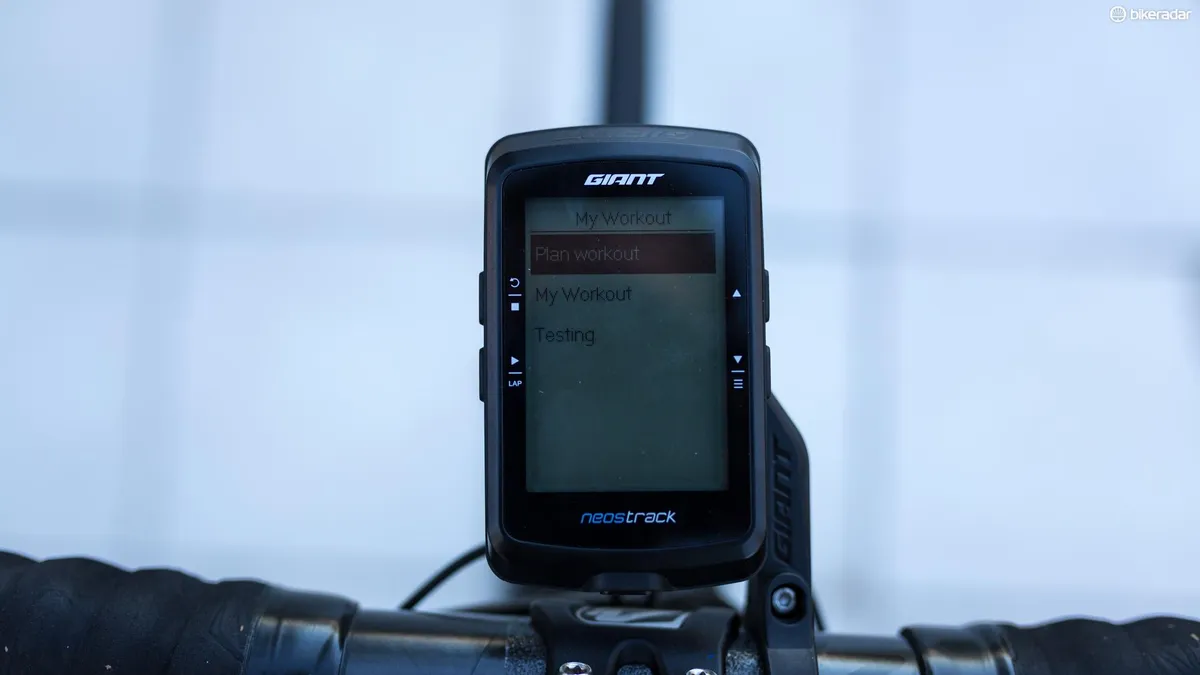In the crowded and competitive GPS computer market, Giant decided to go toe-to-toe with Garmin and Wahoo with the NeosTrack, a full-featured, long-lasting and budget-friendly head unit made in collaboration with Bryton.
Like all computers, it has its quirks, but for the money, the NeosTrack is tough to beat.
- Best GPS devices for cycling
- Best GPS and smartwatches for cycling: how to choose the right one for you
- Bryton Rider 530 review
Giant NeosTrack features and specifications
- 33hr claimed battery life
- ANT+, Bluetooth and WiFi
- Syncs with NeosTrack app
- Breadcrumb navigation
- 2.6-inch screen
- 79g
- Five button operation, no touchscreen
- 80-functions
- £150 / $180 / AU$300
The NeosTrack can record all the standard metrics and variations of speed, time, power, distance, heart rate, etc., as well as some of the more technical data fields like TSS, normalised power and L/R power.
It can also integrate with Di2 drivetrains to show you what gear you're in and remaining Di2 battery life. Plus it will connect with Bluetooth Smart and ANT+ sensors too, and the computer allows profiles for multiple bikes so it wont waste power searching for the power meter on your road bike on a MTB ride.
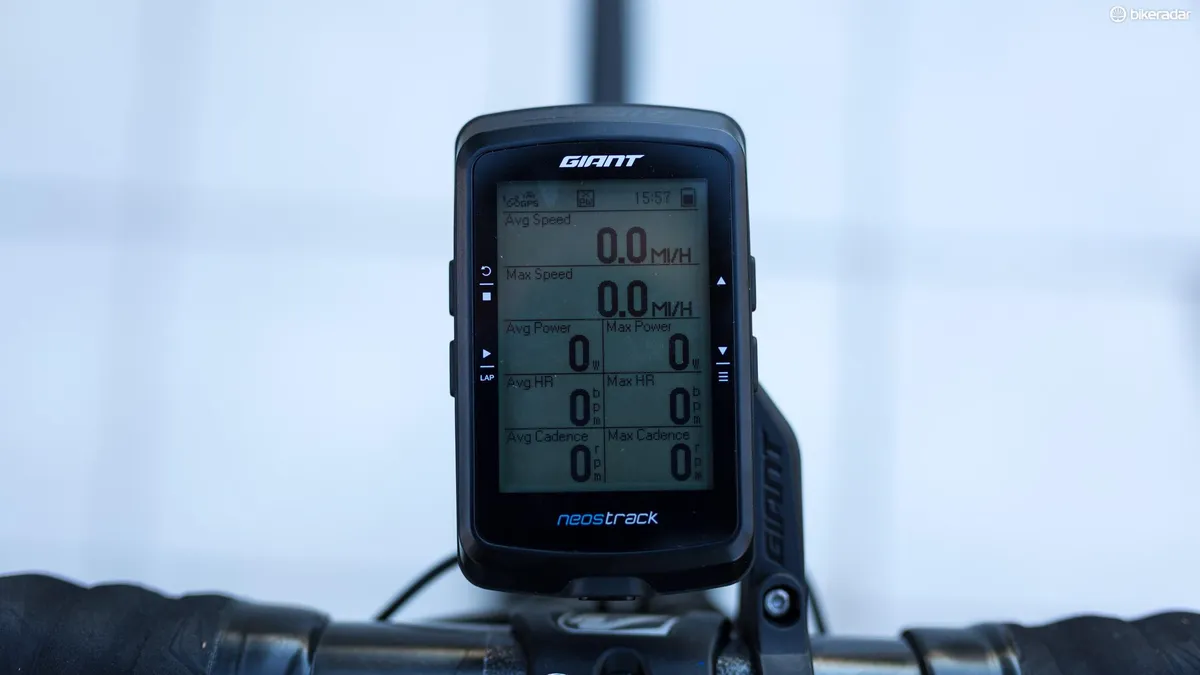
Turn-by-turn navigation is on offer from a preloaded route or through the “Plan Trip” screen in the NeosTrack app, where you search a destination and the computer will guide you there.
You don’t get a fancy colour touchscreen, nor features such as Strava Live Segments, and it looks a bit old school when compared to some of the latest head units. But it makes up for this with its massive battery life.
The NeosTrack app is quite similar to Bryton’s offering. It’s a bit clunky and there is a learning curve, especially when you compare it to the companion apps from Garmin or Wahoo, but it’s plenty capable.
Riding and training with the NeosTrack
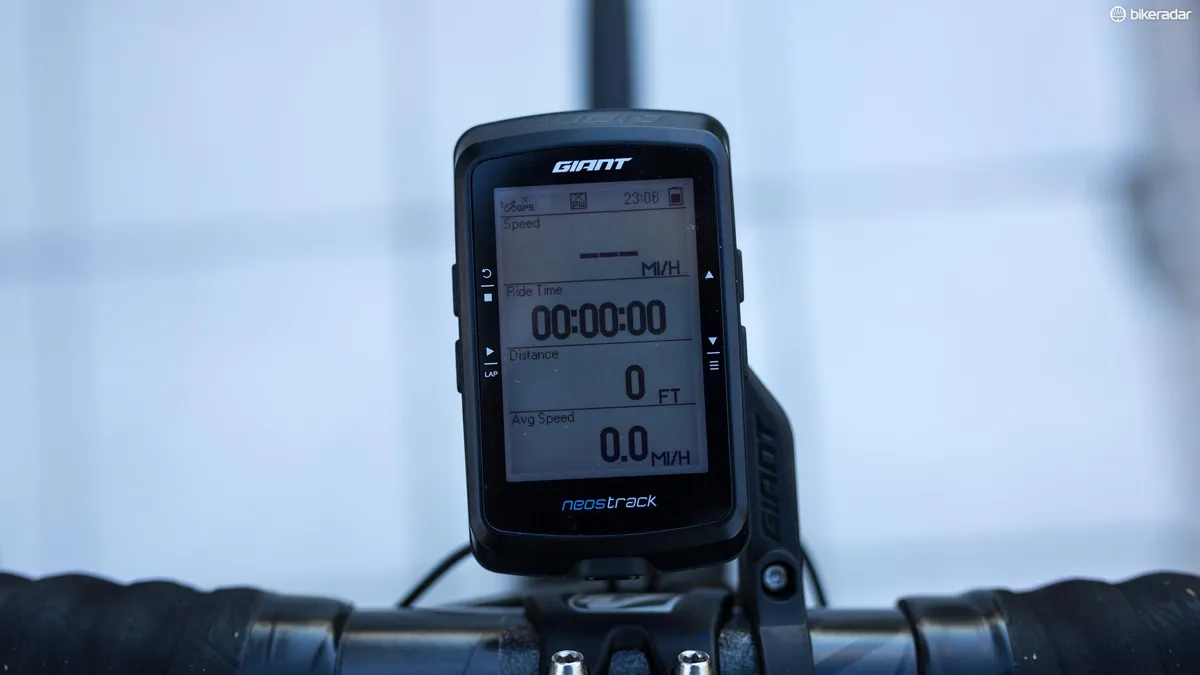
Slotting roughly into the same space as the Garmin 520 feature-wise, the NeosTrack measures 54.9mm x 92.7mm x 13.8mm and weighs 79g by our scales. The anti-glare black and white 2.6-inch screen is tack sharp and easy to read in pretty much any light conditions.
With so much screen real estate available, the NeosTrack can display up to six pages with ten data fields each. This is in addition to dedicated Altitude and Track (navigation) pages.
On top off the GPS, ANT+ and Bluetooth capabilities, the NeosTrack supports WLAN over-the-air software updates and activity uploads. Activities can also be uploaded via a Bluetooth connection to your phone, but it is far from quick. In fact, my Wahoo Elemnt Bolt was able to upload three activities before the NeosTrack finished a one-hour ride ― the WLAN transfer is considerably faster.
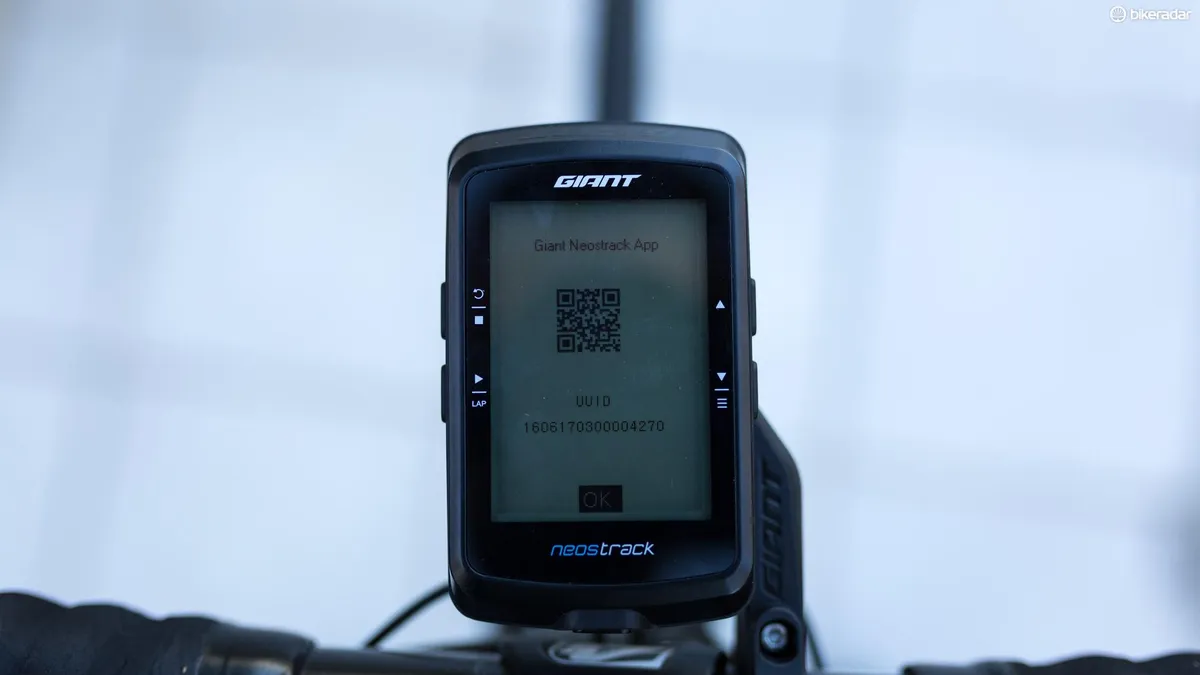
Rides can automatically be pushed to Strava and TrainingPeaks, though the feature was initially a bit shaky. When the unit first arrived I struggled to activate the Strava sync, but a firmware update fixed the issue.
The NeosTrack has basic mapping capabilities. There are no base maps, but the breadcrumb-style navigation is one of the best I’ve used. Routes can be created using previous activities, through the NeosTrack companion app or website, or a GPX file from Strava or Komoots or similar.
For routes created in the NeosTrack app or from previous activities, the computer will alert you to upcoming turns. Strava routes get breadcrumb navigation without any turn-by-turn information.
Giant has also created its own quarter-turn mounting system, and the computer comes with stem/bar mounts as well as an out in front mount. The out in front mount isn’t the most stable on the market and on bumpy roads, you can definitely see the computer bounce a bit.
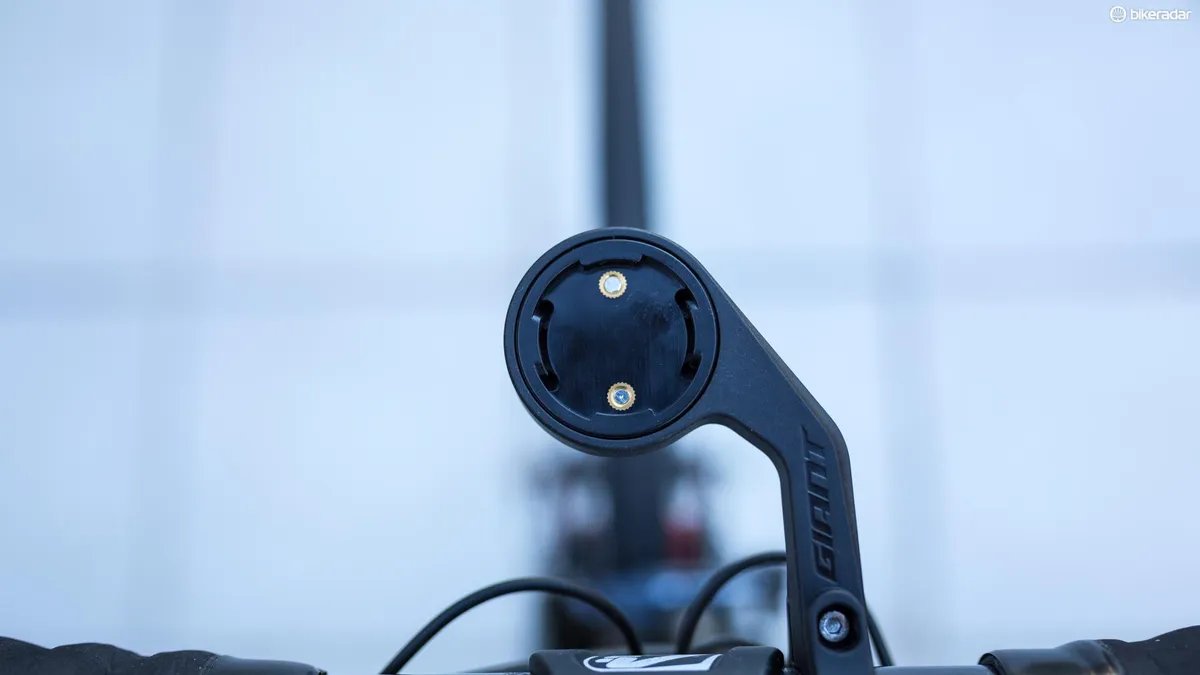
The NeosTrack also has a Giant Lab TrainSmart feature which sees FTP, LTHR, MAP and MHR tests pre-programmed into the unit. TrainSmart also allows you to design interval workouts, defining durations, targets and repetitions and track your progress. For the moment, this feature isn’t a part of the app integration and workouts must be created on the computer itself.
One of the most appealing aspects about the NeosTrack is the massive battery life. Claimed at 33 hours, I was getting about 30 out of my test unit but that is still double what you get with a Garmin Edge 520 or Wahoo Elemnt Bolt.
It's a Giant
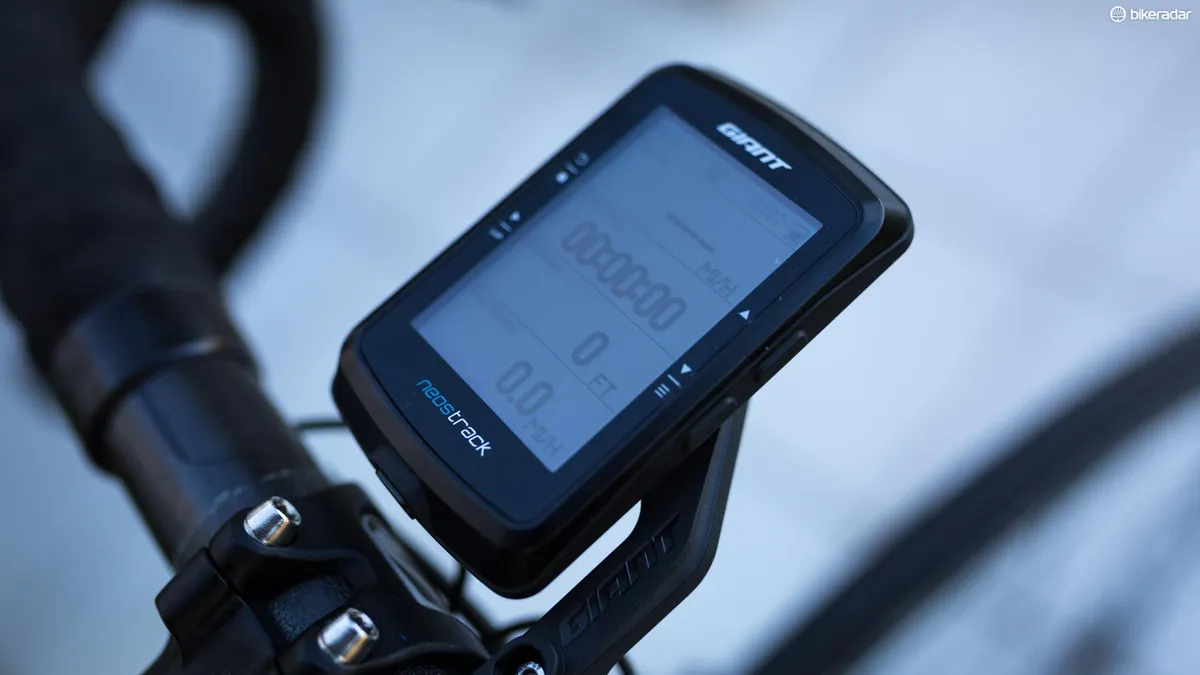
My first exposure to the NeosTrack was at the Tour Down Under, when I spotted an orange and black computer that at first glance appeared to be a Bryton Rider 530. However, this head unit was labelled as the Giant NeosTrack and was an early prototype of the computer.
Going into testing this computer I was suspect that Giant had just whacked a logo on a Rider 530, but as I used the computer I found that while based on the same Bryton DNA, the NeosTrack is its own computer.
I did struggle a big with the UI, but that is more because I have been thoroughly brainwashed by Garmin and am used to the setup of its menu structure and where the buttons are situated on the computer itself.

The NeosTrack is a powerful little unit. It doesn’t have some of the bells and whistles that head units from other brands do, but it also doesn't come with nearly the same cost. Sharply priced at £150 / $180 / AU$300, there is some serious bang for your buck here.
The NeosTrack does the important things well: it captures data accurately and can talk to power meters, speed and cadence sensors, and HR straps without a fuss. The app isn't as feature-rich or pretty as Garmin Connect or Wahoo's app, but again it does the important stuff well: facilitating wireless uploads, route planning and presenting your data in detailed easy-to-read graphs.
Overall it's the simplicity of the NeosTrack ecosystem and the aeons of battery life that set this computer apart. The NeosTrack is a no-nonsense head unit for those that want a computer that prioritises data and aren't too concerned with getting text notifications on their head unit or racing people who aren't there for Strava KOMS.
